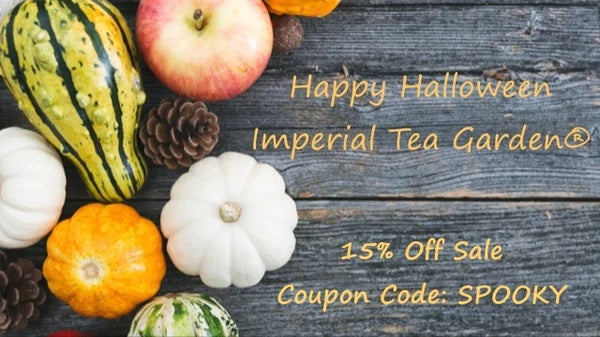Types Of Green Tea
Green Tea
What are the different types of green tea? Aren't all tea leaves just plucked, steamed and dried? The finished loose leaf tea is dependent upon many factors - climate, soil, harvesting and processing. China currently accounts for roughly 80% of the worlds green tea production while Japan is nearly 10 percent. So it is apparent that the majority of the teas you encounter will be from China or Japan. A little knowledge in some of the terms used to describe the processing that gives each tea a different flavor can be quite helpful along your journey.
One major difference noted between Chinese green tea and Japanese green tea is pan fired vs steamed. Japanese green teas are more often steamed before drying and Chinese green teas tend more toward pan firing. Japan has been known for growing and processing some of the best green tea but rarely is it exported. There is always room for improving ones knowledge of tea and the terminology used to describe the taste of tea.
The following information should be useful in discerning the different types of green tea available in the market. Visit our tea terms and our tea glossary pages for more information on terms used to describe tea types and tea processing.
Chinese Green Tea
Chunmee
The tea leaves are individually pinched and hand rolled in a traditional manner and then pan fired. The shape of the leaves of this special grade tea resemble an eyebrow hence the word "mee" meaning eyebrow.
Mao Feng
Mao feng teas are popularly grown in the Huangshan mountain range in Anhui Province. Mao Feng teas are harvested by plucking intact two equal sized leaves and a bud together.
Lung Ching or Lonjing
Also known as Dragon Well tea. Grown near Hangzhou in Zhejiang province, Dragon Well Lung Ching is the most well known pan fired Chinese green tea.
Gunpowder
The steamed leaf is rolled into small pellets that resemble gunpowder. The leaves hold there shape well and continue to unfurl with each steep.
Japanese Green Tea
Sencha
Sencha is the most frequently consumed and well-known variety of Japanese green tea. It is made according to the most common processing methods, whereby the leaves are steamed and rolled to produce tea. Sencha is the most popular for drinking and often has an herbaceous, grassy and astringent profile.
Fukamushi Sencha
Green tea that has been steamed approximately twice as long as regular Sencha is called Fukamushi Sencha. Fukamushi means "steamed for a long time." Since the leaves have been thoroughly exposed to the steam's heat, they become brittle and the tea has a stronger taste and darker green color. It also is void of the grassy flavor and astringency associated with common sencha green tea.
Gyokuro
Gyokuro tea bushes are covered with cloth or reed screen approximately three weeks prior to picking the tea leaves. Limiting the amount of sunlight that reaches the new shoots while they are growing, the formation of catechins from amino acids (theanine) is suppressed, resulting in lower astringency and a rich flavor.
Matcha
Matcha is that unlike Sencha and other green teas in that the stone ground leaf is whisked into a beverage and the entire leaf is consumed as opposed to steeping and discarding the tea. Dark Matcha (Koicha) is used in Japan's traditional tea ceremony. Matcha is also used extensively in the making of traditional Japanese confections and various savory dishes and recently has been a favorite addition to desserts and smoothies.
Genmaicha
Genmaicha name comes from the Japanese word for "brown rice," which is rice that still retains the bran covering of the rice grain. The steamed brown rice is roasted and some of the grains pop like popcorn hence the nickname "popcorn tea" is often associated with genmaicha - Genmaicha has a low caffeine content
Hojicha
Hojicha is made by roasting Sencha or other types of green tea, which gives it a distinctive roasted aroma. The tea leaves are roasted in a roasting pan at a temperature of approximately 200 degrees C and then immediately cooled. Through roasting, caffeine is sublimated (changed directly from a solid to a gaseous state) and the Hojicha becomes less bitter. For this reason, it is said to be a tea that is easy to drink for children and elderly people. One may enjoy Hojicha's savory aroma and clear, light taste.
Bancha
Ichibancha is the first picking of new leaf shoots of the year. The second tea harvesting is called Nibancha and thirdly Sanbancha based on the order in which it is picked. Ichibancha is used more extensively than the later harvested Nibancha and Sanbancha which are poor quality.
Kukicha
Kukicha is a form of tea made from the twigs and stems from tea plants. Kukicha can been green or roasted and is a rather pleasant taste albeit a lower quality in respects to other loose leaf teas that are available on the market. Almost void of caffeine, Kukicha twig tea may not be for the purest tea connoisseur, however it is worth trying.
Best Wishes - Enjoy the Jouney
After the Fukushima nuclear accident, importation of tea from Japan was no longer allowed into the United States. Imperial Tea Garden is once again stocking Sencha green tea from Japan and looking forward to many more additions over the coming years.
Leave a comment
Comments will be approved before showing up.




Imperial Tea Garden
Author